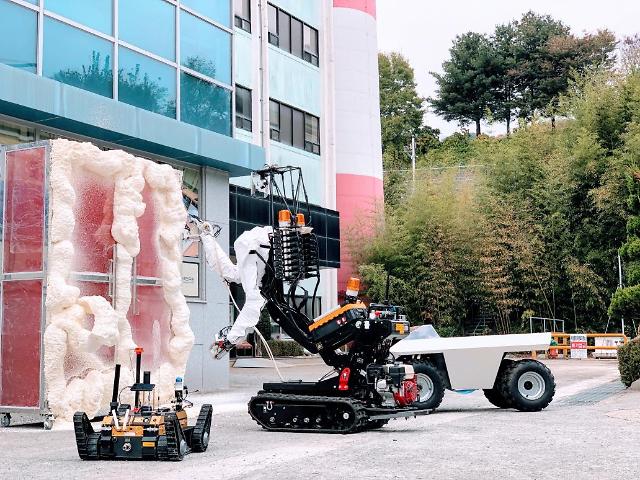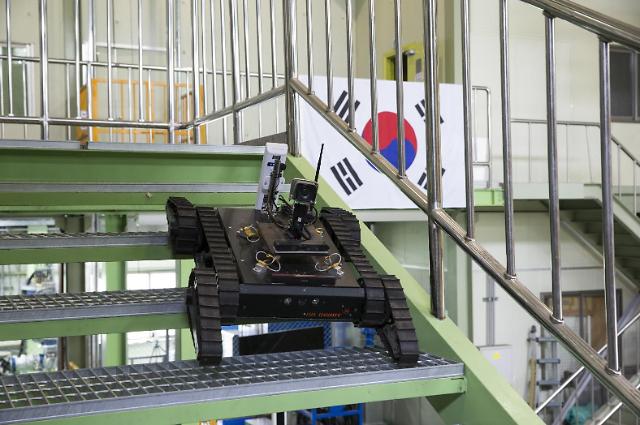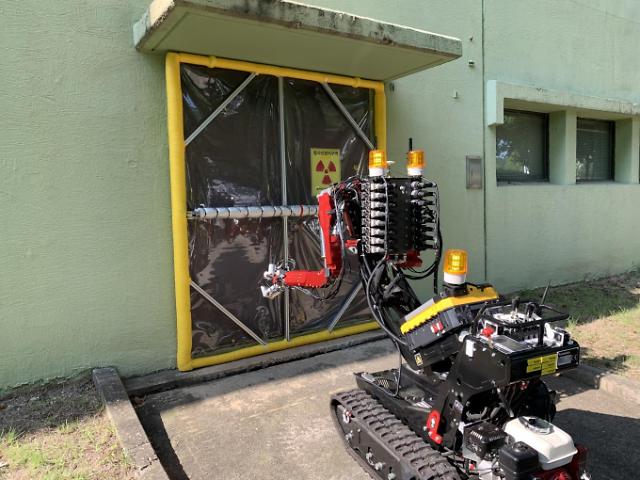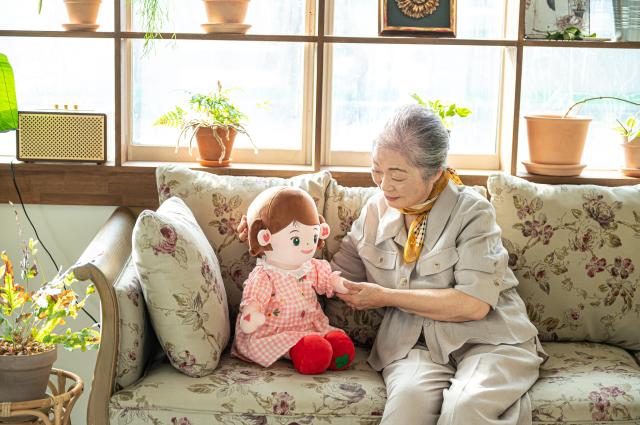
[Courtesy of KAERI]
The Korea Atomic Energy Research Institute (KAERI) said in a statement on December 7 that the disaster control system is based on three different mobile robots -- Tracked Radiation Area Monitoring (TRAM), Remote control system for Accident Monitoring (RAM), and Accident Response Manipulator (ARMstrong). Using a secure server and wireless networks, they are run simultaneously to minimize the operation time and increase efficiency.

This image shows a Tracked Radiation Area Monitoring (TRAM) robot developed by KAERI. [Courtesy of KAERI]

This image shows a Remote Accident Monitoring (RAM) robot developed by KAERI. [Courtesy of KAERI]
ARMstrong is a tracked robot with a pair of manipulators that can carry out the delicate manipulation of objects such as turning off a valve or plugging in an electrical cord. It can move heavy debris of up to 200 kilograms (440 pounds) such as a fuel drum or concrete blocks and put out a fire using spray guns.

This image shows an Accident Response Manipulator (ARMstrong) robot developed by KAERI. [Courtesy of KAERI]
"The establishment of our robot disaster control is only the first step," KAERI research department head Jeong Kyung-min was quoted as saying. "We will continue to upgrade the system to be ready and to assure citizens at all times in case of an emergency."
KAERI said that its robot disaster control system has been tested six times since 2016. TRAM had relayed a video feed of a site using a dedicated video image server while ARMstrong used special urethane foams to sealed off exits of the building that leaked radioactive materials.
Copyright ⓒ Aju Press All rights reserved.





View more comments